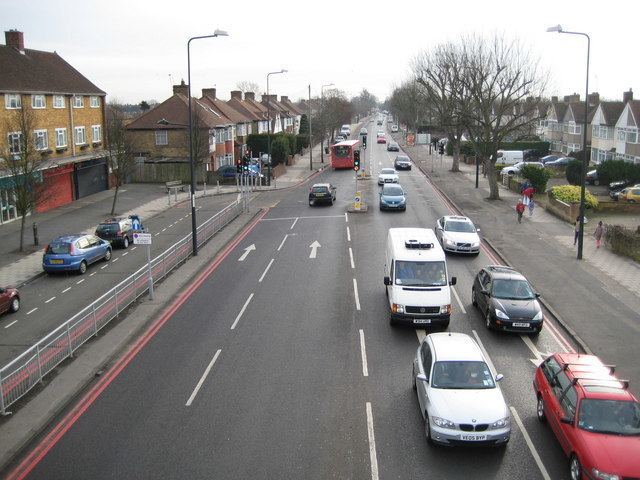 | ||
The term red route has been separately adopted for two entirely different highway purposes within the United Kingdom.
Contents
Congestion reduction
In London and the county of West Midlands in the United Kingdom, red routes are major roads on which vehicles are not permitted to stop, first introduced in north and east London in 1991. The prohibition extends to stopping for loading or unloading, and to boarding or alighting from a vehicle (except for licensed taxis and the holders of blue badges). Red routes are mainly used on major bus and commuting routes.
Red routes are marked with red lines at the sides of the road. Double red lines mean that the regulations apply at all times and on all days. Single red lines means that the prohibition applies during times displayed on nearby signs or at the entry to the zone. Red route clearways are signed but there are no lines on the road. Stopping is only permitted in lay-bys (red lines are only marked at junctions).
The 580 km of red routes in London are policed by "Red Route Patrols" and managed by London Streets, an arm of Transport for London.
A similar scheme operates in Edinburgh; here, however, the routes affected – being marked by the use of green road-surfacing rather than red lines – are known as "Greenways".
A number of hospitals in the United Kingdom have mimicked the red road lines, in and around ambulance dispatch and Accident and Emergency areas. These road markings are to allow ambulances and other emergency vehicles uninhibited access in and out of such areas; whilst these road markings are often respected by road users there is very little (if any) enforcement.
Accident reduction
In Somerset, the local road safety partnership has designated some of the A roads within the county as Red Routes, but in this case the term is used to indicate routes that have a higher than average accident rate.
The term is similarly used to denote dangerous routes in Northamptonshire, It is not clear that the scheme will be maintained following the closure of the Road Safety Partnership whose initiative it was.
Lincolnshire has a similar scheme to the Northamptonshire one.
The county of Cheshire, and therefore the town of Warrington also use the idea of Red Routes to designate roads with historically high accident rates.
The former Suffolk speed camera organisation chose the expression Red Route to denote routes where high levels of accidents justify the frequency use of mobile speed cameras.
Leicestershire county council have chosen not to implement a Red Route scheme, believing it can be misleading and arbitrary. They believe in identifying or solving individual danger spots instead.
